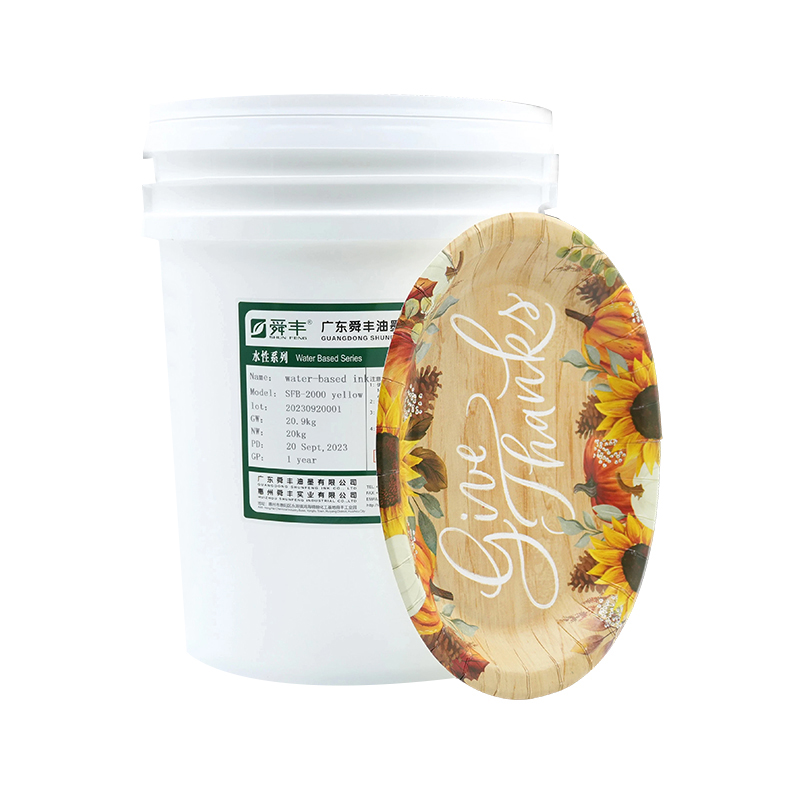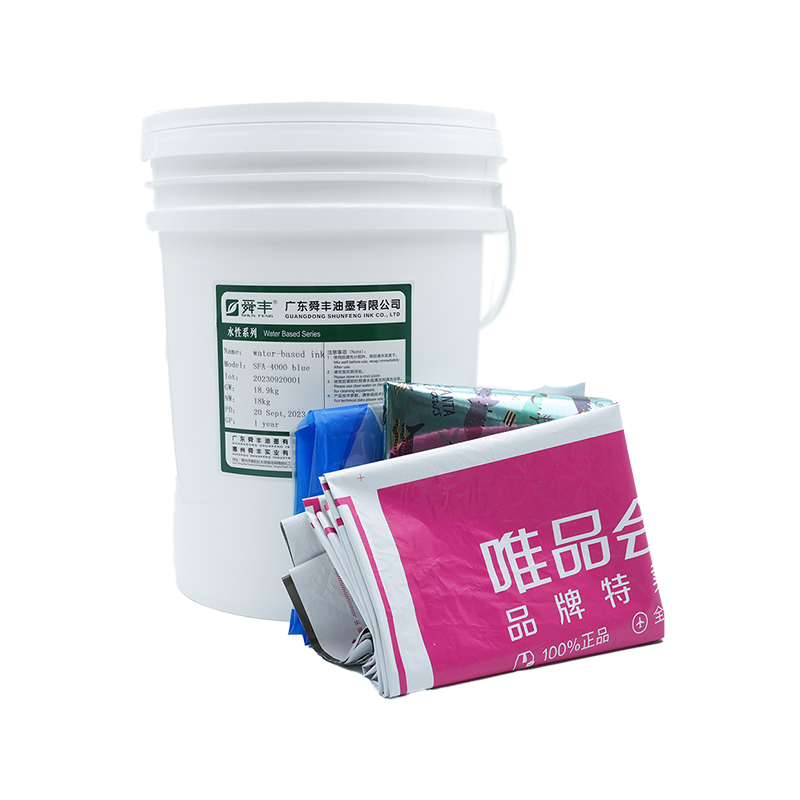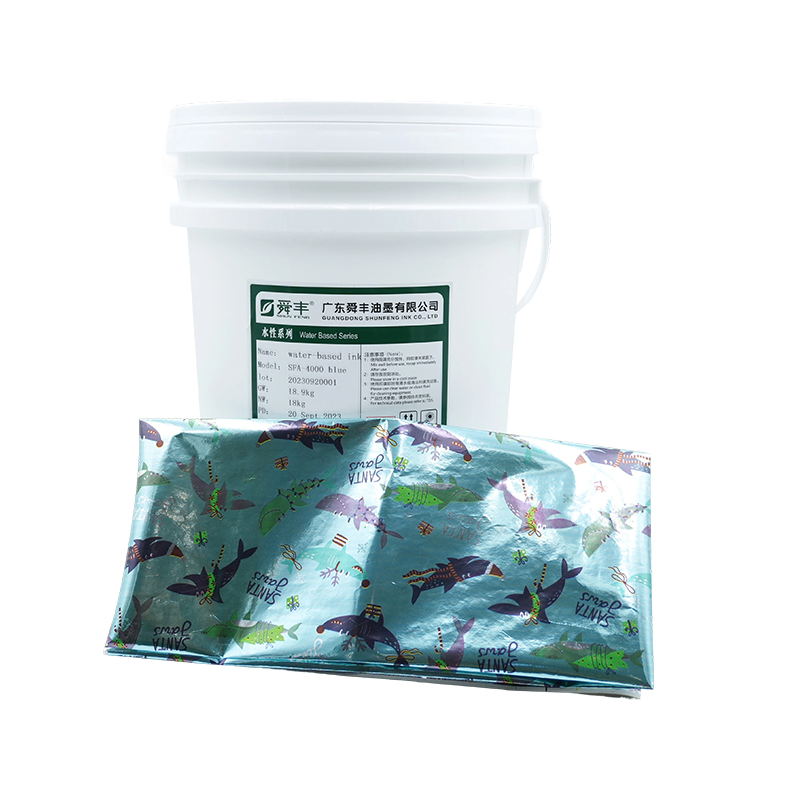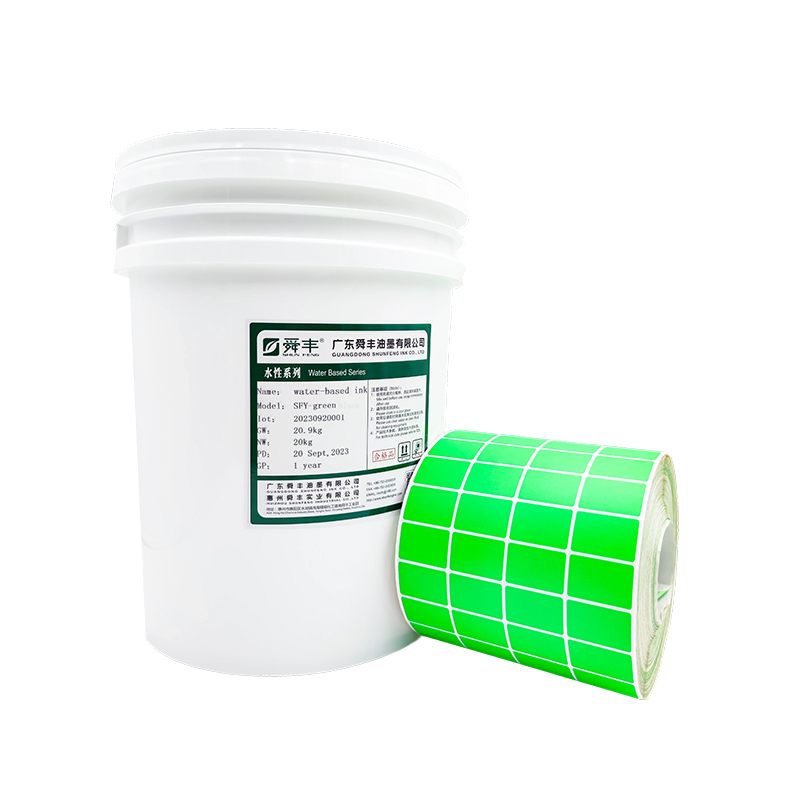How does Universal Economical Offset UV Ink achieve fast curing and improve production efficiency?
Release Time : 2025-08-07
Universal Economical Offset UV Ink plays a vital role in the modern printing industry, offering unique advantages in improving production efficiency. One of its most notable features is its rapid curing speed, which not only significantly reduces production cycle times but also ensures high-quality end products.
First, to understand the principles behind rapid curing, we need to understand the basic components and workings of UV inks. UV inks are composed of resins, pigments, photoinitiators, and other additives. When these inks are exposed to ultraviolet (UV) light, the photoinitiators absorb energy from specific wavelengths of UV light, triggering a series of chemical reactions that rapidly transform the ink from a liquid to a solid state. This transformation occurs almost instantly, eliminating the lengthy drying process required by traditional solvent-based or water-based inks. As a result, printed products can be immediately processed for subsequent processing, such as cutting, folding, or binding, significantly improving overall production line flow and efficiency.
Beyond the basic working principle, UV ink formulation design is also crucial for achieving fast curing. By carefully selecting and optimizing photoinitiators and other components, manufacturers can develop inks tailored to various printing conditions and requirements. For example, in some applications where speed is crucial, using highly active photoinitiators can accelerate the curing reaction. Adjusting the resin system can also influence the curing rate. Certain resin types crosslink more quickly upon exposure to UV light, forming a strong film and thus accelerating the curing process.
The choice of light source is also crucial. Efficient UV curing systems typically utilize high-intensity mercury lamps or LED sources, which can provide sufficient UV energy in a short period of time. Recently developed UV LED technology is particularly popular due to its lower energy consumption, longer lifespan, and more uniform light distribution. Compared to traditional mercury lamps, UV LEDs operate at lower temperatures, reducing the risk of damage to heat-sensitive materials. Their instant on/off switching further enhances production flexibility and responsiveness.
In practical applications, the direct benefit of fast curing is a significant increase in production efficiency. Traditional printing processes often require significant time for ink drying, which not only takes up space but also limits equipment utilization. With UV inks, printed products can be ready for the next step as soon as they leave the press, achieving true "print-and-use" performance. This means companies can reduce inventory backlogs, speed up order turnover, and respond more confidently to urgent orders. Furthermore, since no additional drying equipment is required, the overall production line layout is simplified, reducing operating costs.
Furthermore, fast curing improves print quality. Since UV inks emit virtually no volatile organic compounds (VOCs) during the curing process, they avoid volume shrinkage caused by solvent evaporation, thus preventing common surface defects such as pinholes and orange peel. UV inks' high gloss and smoothness also enhance the visual appeal of printed products. More importantly, the strong film formed by UV inks after curing offers excellent abrasion and chemical resistance, ensuring that printed products maintain their pristine appearance even in harsh environments.
Environmental benefits are also crucial. With growing global awareness of environmental protection, more and more companies are opting for green printing solutions. UV inks' fast curing properties mean they produce virtually no harmful emissions throughout the printing process, meeting stringent environmental standards. Furthermore, since UV inks are solvent-free, they do not require complex ventilation systems to remove exhaust gases, saving energy and reducing the carbon footprint. This is undoubtedly a significant advantage for printing companies pursuing sustainable development.
Finally, the wide range of applications for universal economical offset UV ink also demonstrates its high efficiency. UV inks exhibit excellent adhesion and printability on a variety of substrates, including paper, plastic, metal, and glass. This versatility enables companies to be more competitive in meeting diverse customer needs and flexibly adjust production plans to meet market fluctuations. In short, by optimizing its formulation, using advanced light sources, and leveraging its unique physical and chemical properties, universal economical offset UV ink achieves rapid curing, bringing unprecedented efficiency improvements and technological innovation to the printing industry.
First, to understand the principles behind rapid curing, we need to understand the basic components and workings of UV inks. UV inks are composed of resins, pigments, photoinitiators, and other additives. When these inks are exposed to ultraviolet (UV) light, the photoinitiators absorb energy from specific wavelengths of UV light, triggering a series of chemical reactions that rapidly transform the ink from a liquid to a solid state. This transformation occurs almost instantly, eliminating the lengthy drying process required by traditional solvent-based or water-based inks. As a result, printed products can be immediately processed for subsequent processing, such as cutting, folding, or binding, significantly improving overall production line flow and efficiency.
Beyond the basic working principle, UV ink formulation design is also crucial for achieving fast curing. By carefully selecting and optimizing photoinitiators and other components, manufacturers can develop inks tailored to various printing conditions and requirements. For example, in some applications where speed is crucial, using highly active photoinitiators can accelerate the curing reaction. Adjusting the resin system can also influence the curing rate. Certain resin types crosslink more quickly upon exposure to UV light, forming a strong film and thus accelerating the curing process.
The choice of light source is also crucial. Efficient UV curing systems typically utilize high-intensity mercury lamps or LED sources, which can provide sufficient UV energy in a short period of time. Recently developed UV LED technology is particularly popular due to its lower energy consumption, longer lifespan, and more uniform light distribution. Compared to traditional mercury lamps, UV LEDs operate at lower temperatures, reducing the risk of damage to heat-sensitive materials. Their instant on/off switching further enhances production flexibility and responsiveness.
In practical applications, the direct benefit of fast curing is a significant increase in production efficiency. Traditional printing processes often require significant time for ink drying, which not only takes up space but also limits equipment utilization. With UV inks, printed products can be ready for the next step as soon as they leave the press, achieving true "print-and-use" performance. This means companies can reduce inventory backlogs, speed up order turnover, and respond more confidently to urgent orders. Furthermore, since no additional drying equipment is required, the overall production line layout is simplified, reducing operating costs.
Furthermore, fast curing improves print quality. Since UV inks emit virtually no volatile organic compounds (VOCs) during the curing process, they avoid volume shrinkage caused by solvent evaporation, thus preventing common surface defects such as pinholes and orange peel. UV inks' high gloss and smoothness also enhance the visual appeal of printed products. More importantly, the strong film formed by UV inks after curing offers excellent abrasion and chemical resistance, ensuring that printed products maintain their pristine appearance even in harsh environments.
Environmental benefits are also crucial. With growing global awareness of environmental protection, more and more companies are opting for green printing solutions. UV inks' fast curing properties mean they produce virtually no harmful emissions throughout the printing process, meeting stringent environmental standards. Furthermore, since UV inks are solvent-free, they do not require complex ventilation systems to remove exhaust gases, saving energy and reducing the carbon footprint. This is undoubtedly a significant advantage for printing companies pursuing sustainable development.
Finally, the wide range of applications for universal economical offset UV ink also demonstrates its high efficiency. UV inks exhibit excellent adhesion and printability on a variety of substrates, including paper, plastic, metal, and glass. This versatility enables companies to be more competitive in meeting diverse customer needs and flexibly adjust production plans to meet market fluctuations. In short, by optimizing its formulation, using advanced light sources, and leveraging its unique physical and chemical properties, universal economical offset UV ink achieves rapid curing, bringing unprecedented efficiency improvements and technological innovation to the printing industry.







